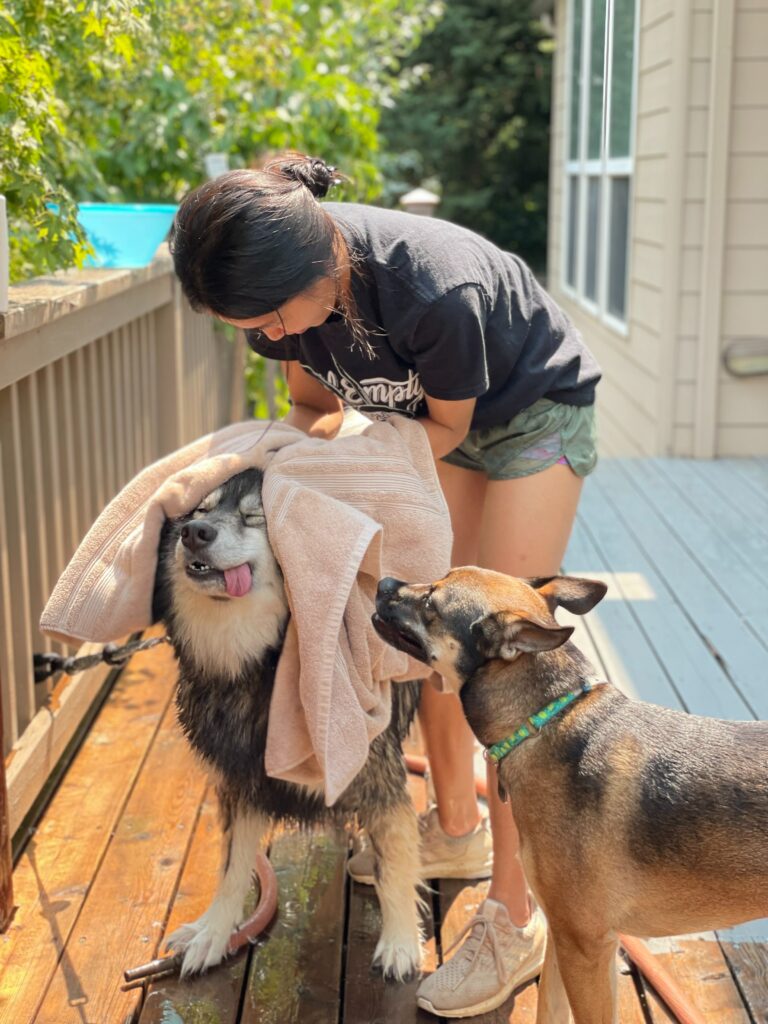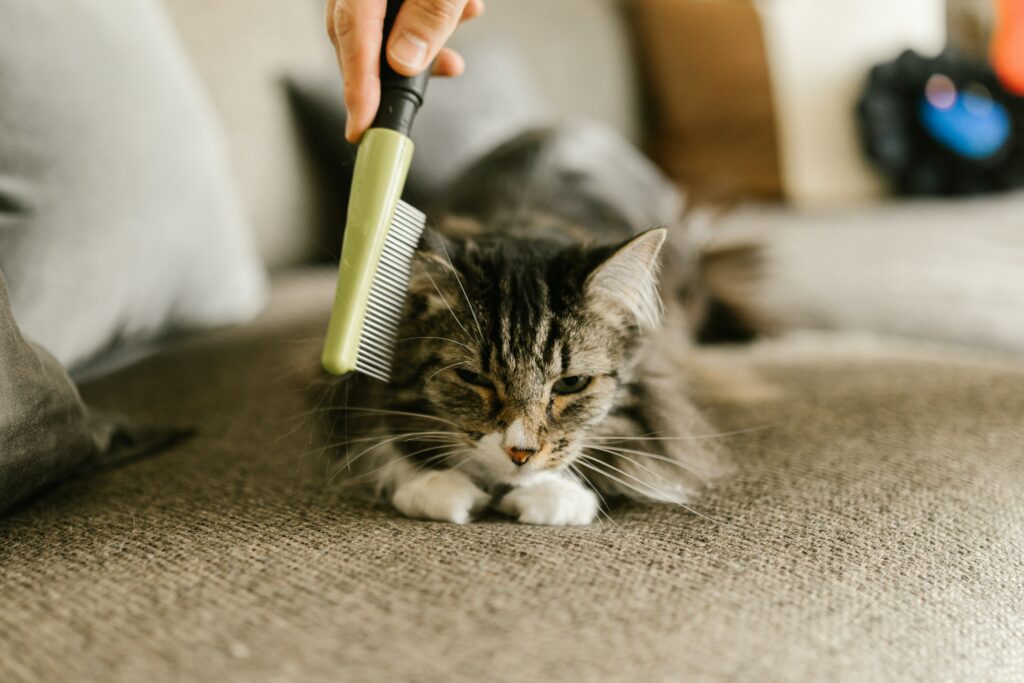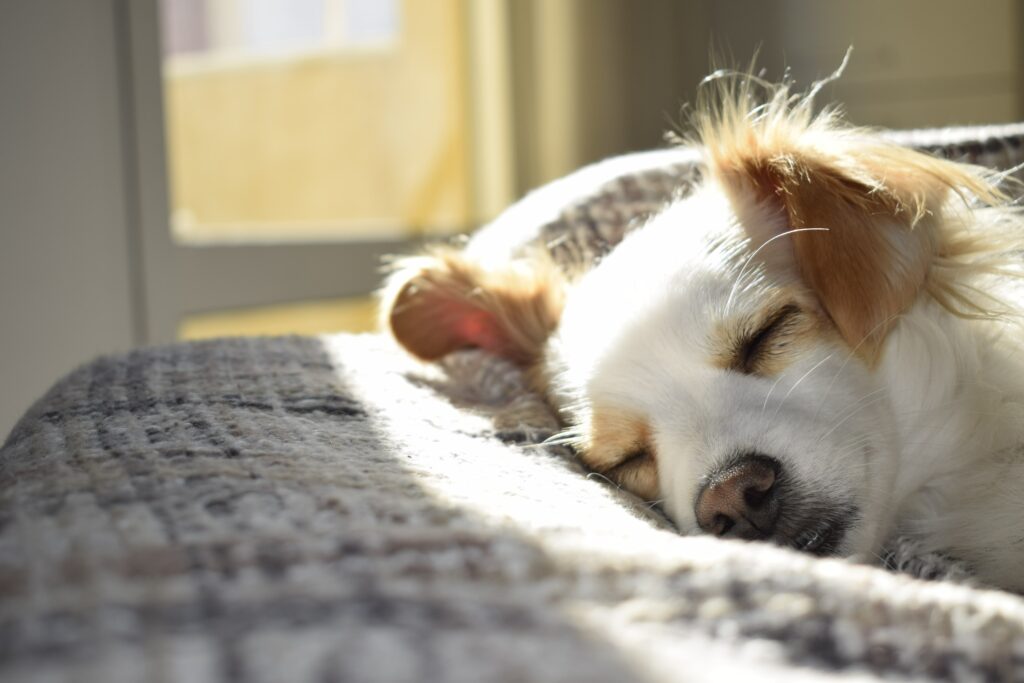Pets bring immense joy and companionship to our lives, but living with them requires extra effort in maintaining a clean and hygienic home. From pet hair and odors to accidents and the overall cleanliness of their living areas, it’s essential to have effective strategies in place to keep your house clean and fresh. In this article, we will explore various tips and techniques that will help you achieve a spotless home while enjoying the company of your furry friends.
Creating a Pet-Friendly Cleaning Routine

Establishing a regular cleaning routine is paramount when it comes to maintaining a clean house with pets. By incorporating specific cleaning tasks into your schedule, you can effectively manage pet-related messes and prevent them from accumulating. A well-designed cleaning routine will not only keep your house clean but also contribute to the overall well-being of your pets and family members.
Cleaning Pet Accidents
Accidents happen, especially during the process of house training or when pets are unwell. It’s important to act swiftly to clean up pet accidents properly and prevent stains and odors from setting in. Start by blotting up as much liquid as possible using absorbent towels or paper towels. Avoid rubbing the stain, as it may spread the mess further.
Next, prepare a cleaning solution using mild detergent or enzymatic cleaners specifically designed for pet stains. Follow the instructions on the product and apply the solution to the affected area. Gently blot the stain with a clean cloth or sponge, working from the outer edges inward. Rinse the area with clean water and blot again to remove any residue.
After cleaning, it’s crucial to ensure the area is thoroughly dried to prevent any lingering odors. You can use a fan or open windows to facilitate the drying process. If necessary, consider using a pet-friendly stain and odor remover to tackle any remaining traces.
Managing Pet Hair and Dander

One of the common challenges pet owners face is dealing with pet hair and dander. To minimize their presence in your home, it is important to implement effective strategies. Regular grooming sessions play a vital role in reducing shedding and controlling dander. Brushing your pets frequently not only removes loose hair but also stimulates their skin, promoting a healthy coat.
Investing in a high-quality pet brush or comb designed for your pet’s specific needs can make a significant difference. Additionally, consider using lint rollers or sticky pet hair removers to remove any stray hairs from furniture, clothing, and other surfaces.
Another helpful tip is to establish pet-free zones in your home. Designate certain areas where your pets are not allowed to roam freely, such as bedrooms or specific rooms with delicate fabrics. This will help contain pet hair to certain areas and make cleaning more manageable.
Dealing with Pet Odors
While pets bring joy and companionship, they can also leave behind unpleasant odors. To maintain a fresh-smelling home, it is essential to address pet odors proactively. Regularly clean your pet’s bedding and blankets to remove any accumulated odors. Use pet-safe detergents and ensure thorough drying to prevent musty smells.
In addition to washing pet bedding, focus on eliminating odors from other surfaces. Consider using natural remedies such as baking soda or white vinegar. Sprinkling baking soda on carpets and upholstery before vacuuming helps neutralize odors. Similarly, wiping down hard surfaces with a solution of white vinegar and water can effectively eliminate lingering smells.
Using air purifiers or opening windows to improve ventilation can also help freshen the air. Furthermore, using pet-friendly air fresheners or odor-neutralizing sprays can provide a pleasant fragrance without posing any harm to your pets.
Protecting Furniture and Flooring
Pets can unintentionally cause damage to furniture and flooring through scratching, chewing, or accidents. To protect your belongings and maintain a clean living space, there are several preventive measures you can take.
For furniture, consider using protective covers or blankets to shield them from pet hair, scratches, and accidents. Choose materials that are durable and easy to clean. Additionally, provide your pets with appropriate scratching posts or pads to redirect their natural scratching behavior away from furniture.
When it comes to flooring, opt for pet-friendly and easy-to-clean options, such as laminate, vinyl, or tile. These surfaces are less likely to trap pet hair and are more resistant to stains. Regularly sweep or vacuum the floors to remove any loose hair or debris. Using doormats at entryways can help minimize dirt and outdoor contaminants from being tracked inside.
In case of accidents on carpets or rugs, follow the steps mentioned earlier for cleaning pet stains. It’s also advisable to have a professional deep clean
Maintaining a Clean Pet Bed and Living Area

Just as we enjoy a clean and comfortable living environment, our pets also deserve a clean and cozy space of their own. Regularly cleaning your pet’s bed and living area is essential for their health and well-being.
Start by checking the manufacturer’s instructions for your pet’s bed or bedding materials. Some may be machine washable, while others may require hand washing or spot cleaning. Remove any removable covers or cushions and wash them according to the instructions. Use pet-friendly detergent and ensure they are completely dry before placing them back in the bed.
For non-removable pet beds or living areas, vacuuming is an effective way to remove pet hair, dirt, and debris. Pay attention to corners, seams, and crevices where dirt can accumulate. Use a pet-specific vacuum attachment or a lint roller to capture stubborn pet hair.
To freshen up your pet’s living area, consider using pet-safe deodorizers or fabric refreshers. These products can help neutralize odors and leave a pleasant scent behind. Avoid using harsh chemicals or strong fragrances that may be irritating to your pet’s sensitive nose.
Preventing Fleas and Ticks
Fleas and ticks can not only be a nuisance for your pets but also pose health risks to your entire household. Prevention is key to keeping your home free from these pests.
Regularly check your pets for any signs of fleas or ticks, especially after outdoor activities. Use flea combs to remove any visible pests and promptly dispose of them. Consult with your veterinarian about suitable flea and tick prevention products for your pets. These may include spot-on treatments, collars, or oral medications. Follow the instructions carefully and administer the recommended dosage.
Maintaining a clean and tidy yard is also important in preventing flea and tick infestations. Regularly mow the lawn, trim bushes, and remove any debris or tall grass where these pests can thrive. Consider using pet-safe flea and tick repellents in your outdoor areas.
Managing Litter Boxes
For pet owners with cats, proper management of litter boxes is crucial for maintaining a clean and odor-free home. Start by choosing the right litter box and litter type for your cat’s preferences. Provide a litter box for each cat in your household, plus an extra one.
Scoop the litter box at least once a day to remove solid waste and clumps. Regularly add fresh litter to maintain a suitable depth. Every few weeks, empty the entire litter box, wash it with mild detergent, and refill it with fresh litter. This routine will help minimize odors and provide a clean environment for your cat.
Proper disposal of used litter is also important. Avoid flushing cat litter down the toilet, as it can be harmful to the environment. Instead, use dedicated litter disposal bags and dispose of them in the regular trash.
Organizing Pet Toys and Accessories

Pets often have a variety of toys, accessories, and supplies that can contribute to clutter in your home. By organizing these items, you can create a tidy living space for both you and your pets.
Designate a specific area or storage bin for your pet’s toys. Keep them in one place, making it easier for both you and your pets to find and enjoy them. Consider using storage bins or baskets that are easily accessible and labeled for different types of toys.
When it comes to pet accessories like leashes, collars, and grooming tools, install hooks or racks near the entryway or in a designated pet area. This will keep these items neatly organized and readily available.
Regularly inspect and discard any damaged or worn-out toys to ensure your pets have safe and clean playthings. Wash or clean toys that are machine washable or wipe them down with pet-safe disinfect.
Creating a Pet-Friendly Cleaning Kit
Having a dedicated cleaning kit specifically for pet-related messes can streamline your cleaning routine and ensure you have the necessary tools at hand. Here are some items to include in your pet-friendly cleaning kit:
- Absorbent Towels or Paper Towels: These are essential for quickly blotting up spills and accidents.
- Enzymatic Cleaners: Enzymatic cleaners are effective in breaking down organic stains and odors, such as those caused by urine or pet accidents. Choose a pet-safe enzymatic cleaner and follow the instructions for optimal results.
- Pet-Safe Disinfectant Wipes or Sprays: These are handy for sanitizing surfaces without using harsh chemicals that may be harmful to pets.
- Rubber Gloves: Protect your hands from cleaning chemicals and potential allergens.
- Lint Rollers or Sticky Pet Hair Removers: These are great for removing pet hair from clothing, furniture, and other surfaces.
- Pet-Safe Stain and Odor Removers: Choose products specifically formulated to tackle pet stains and odors effectively.
- Pet-Friendly Vacuum Cleaner: Invest in a vacuum cleaner with strong suction and pet-specific attachments to effectively remove pet hair from carpets, furniture, and floors.
- Baking Soda and White Vinegar: These natural ingredients are versatile and can be used for various cleaning purposes, such as odor removal and stain treatment.
- Pet-Safe Carpet Cleaner: For deep cleaning carpets, choose a carpet cleaner specifically formulated for pet stains and odors.
- Pet Waste Bags: Keep a roll of pet waste bags handy for quick and hygienic disposal of pet waste.
Having a pet-friendly cleaning kit readily available will make it easier for you to address messes promptly and efficiently, maintaining a clean and healthy home environment for both you and your pets.
Safety Considerations
When cleaning your home with pets, it is crucial to prioritize their safety as well as your own. Here are some safety considerations to keep in mind:
- Choose Pet-Safe Cleaning Products: Some household cleaning products contain chemicals that can be toxic to pets. Read labels carefully and opt for pet-safe and non-toxic alternatives whenever possible.
- Keep Pets Away During Cleaning: Certain cleaning activities, such as using strong chemicals or operating noisy equipment, may be stressful or hazardous for pets. Keep them in a separate room or secured area while you clean.
- Ventilate the Area: Open windows or use fans to ensure proper ventilation when using cleaning products that emit fumes.
- Store Cleaning Supplies Safely: Keep cleaning products out of your pet’s reach in secure cabinets or high shelves to prevent accidental ingestion or exposure.
- Avoid Overwhelming Scents: Strong fragrances from air fresheners or cleaning products can be overwhelming to pets. Opt for mild or unscented options to minimize any potential discomfort.
By following these safety precautions, you can maintain a clean home while ensuring the well-being and safety of your beloved pets.
Conclusion
Keeping your house clean when you have pets requires a combination of regular maintenance, effective cleaning techniques, and a pet-friendly approach. By implementing the strategies outlined in this article, you can create a clean and comfortable living environment for both you and your furry companions.
Remember to establish a grooming routine to minimize shedding and control pet hair. Set up pet-free zones in your home to contain pet hair and make cleaning more manageable. Address pet odors proactively by regularly cleaning bedding, using natural deodorizers, and improving ventilation.
Be prepared to clean up pet accidents promptly using appropriate cleaning solutions and techniques. Protect your furniture and flooring from pet-related damage by using covers, providing scratching alternatives, and opting for pet-friendly flooring options.
Maintain a clean pet bed and living area by regularly washing bedding and vacuuming. Prevent fleas and ticks by checking your pets regularly and maintaining a clean yard. Properly manage litter boxes to keep them odor-free and organized.
Create a pet-friendly cleaning kit with essential items to handle pet-related messes effectively and safely. Always prioritize the safety of your pets during the cleaning process and consider hiring professional cleaning services if needed.
Now that you have learned valuable strategies to keep your house clean from pets, put them into action and enjoy a clean and happy home for both you and your beloved pets.
Frequently Asked Questions (FAQs)
- Q: How often should I groom my pet to control shedding?
- A: The frequency of grooming depends on your pet’s breed and coat type. Generally, regular brushing sessions once or twice a week are recommended to minimize shedding.
- Q: Can I use regular cleaning products to clean up pet accidents?
- A: It is best to use enzymatic cleaners specifically designed for pet stains and odors. These cleaners effectively break down organic matter and eliminate odors, preventing pets from remarking the same spot.
- Q: Are there any natural remedies to repel fleas and ticks?
- A: Some natural remedies include using essential oils like lavender, lemon, or eucalyptus. However, it’s important to consult with your veterinarian before using any natural remedies, as some may be harmful to pets.
- Q: How can I prevent my pets from damaging furniture and flooring?
- A: Provide appropriate toys, scratching posts, and chew toys to redirect their behavior. Use furniture covers or blankets to protect surfaces. Choose pet-friendly flooring options that are scratch-resistant and easy to clean.
- Q: Is it necessary to hire professional cleaning services for pet owners?
- A: Hiring professional cleaners can be beneficial, especially for busy pet owners or those who need assistance with deep cleaning or specialized pet-related cleaning tasks. Choose a reputable service experienced in pet-friendly cleaning.



